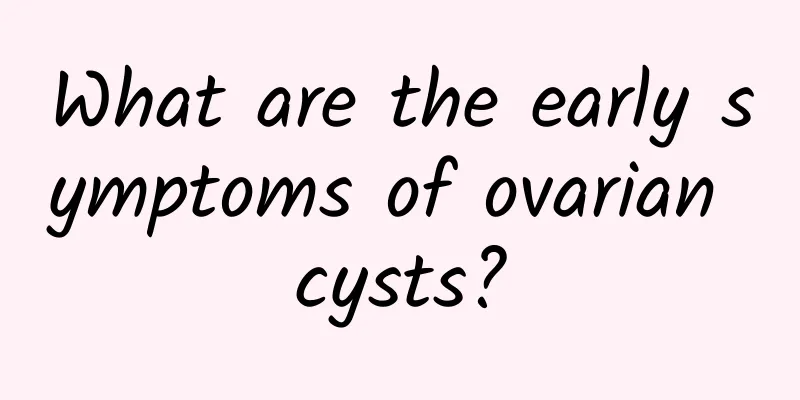Detailed explanation of the symptoms of acute pelvic inflammatory disease and chronic pelvic inflammatory disease

|
What are the symptoms of pelvic inflammatory disease? Pelvic inflammatory disease is a gynecological disease that women often see. It is divided into acute pelvic inflammatory disease and chronic pelvic inflammatory disease. So what are the different symptoms of these two types of pelvic inflammatory disease? Now let the experts introduce to you in detail the symptoms of the two types of pelvic inflammatory disease, hoping to attract your attention. The symptoms of acute pelvic inflammatory disease are lower abdominal pain, fever, increased vaginal discharge, and persistent abdominal pain that worsens after activity or sexual intercourse. If the condition is severe, there may be chills, high fever, headache, and loss of appetite. Those who develop the disease during menstruation may experience increased menstrual flow and prolonged menstruation. If pelvic inflammatory disease wraps around to form a pelvic abscess, it may cause local compression symptoms. Compression of the bladder may cause frequent urination, painful urination, and dysuria; compression of the rectum may cause rectal symptoms such as tenesmus. Further development of acute pelvic inflammatory disease may cause diffuse peritonitis, sepsis, and septic shock, and severe cases may be life-threatening. Chronic pelvic inflammation is caused by the failure to completely treat acute pelvic inflammation or the poor physical condition of the patient, resulting in a prolonged course of the disease. The symptoms of chronic pelvic inflammation are lower abdominal distension, pain and soreness in the lower back, which are often aggravated after fatigue, sexual intercourse and before and after menstruation. The second is abnormal menstruation. Some women may experience neurasthenia symptoms such as lack of energy, general discomfort, and insomnia when the disease lasts for a long time. It often does not heal for a long time and recurs repeatedly, leading to infertility and tubal pregnancy, seriously affecting women's health and increasing the family and social economic burden. Through the detailed explanation of the symptoms of pelvic inflammatory disease by the experts above, I believe that female friends should have a preliminary understanding of the acute and chronic symptoms of pelvic inflammatory disease, right? If you find that you have pelvic inflammatory disease, avoid sexual intercourse and seek medical treatment in time. If you still have questions, you are welcome to consult experts online, and they will give you detailed answers. Pelvic inflammatory disease http://www..com.cn/fuke/pqy/ |
<<: Beware of these major symptoms of irregular menstruation
>>: Explanation: Is dysmenorrhea a disease?
Recommend
Introduction to the hazards of four serious pelvic inflammatory diseases
Many patients with pelvic inflammatory disease do...
Will cervical erosion turn into cancer and cause death?
If you don't pay attention to your private hy...
Effect of embolization interventional treatment for adenomyosis
Embolization interventional therapy for adenomyos...
What are the diagnostic criteria for chronic pelvic inflammatory disease?
As we all know, women are a group that is prone t...
How many types of ovarian cysts are there?
The ovary is the place where a woman gives birth ...
What should I do if I often have urinary urgency and unbearable pain in the lower abdomen during menstruation?
What should I do if I have dysmenorrhea and often...
Why do women lose weight? Answer: Listen to the male whistle
Losing weight in order to fit into a bikini in th...
What preventive measures should women take for adnexitis
What preventive measures can women take for adnex...
Eating the right starch can help you lose weight! This red bean and white fungus soup helps you control calories
Many people's way of losing weight is to quit...
Reference standard for diagnosis of cervical precancerous lesions
The diagnosis of female cervical precancerous les...
What causes benign uterine fibroids?
Benign uterine fibroids may be caused by genetic ...
Will 1.5CM of pelvic fluid affect my life?
Will my life be affected if I have 1.5cm of pelvi...
How to calculate ovulation period? 3 methods to teach you how to self-test ovulation period
Every woman has an ovulation period every month, ...
Is there a genetic factor for congenital absence of vagina?
Is there a genetic factor for congenital absence ...
What discomfort does pelvic effusion cause?
What discomfort can pelvic effusion cause? Pelvic...









